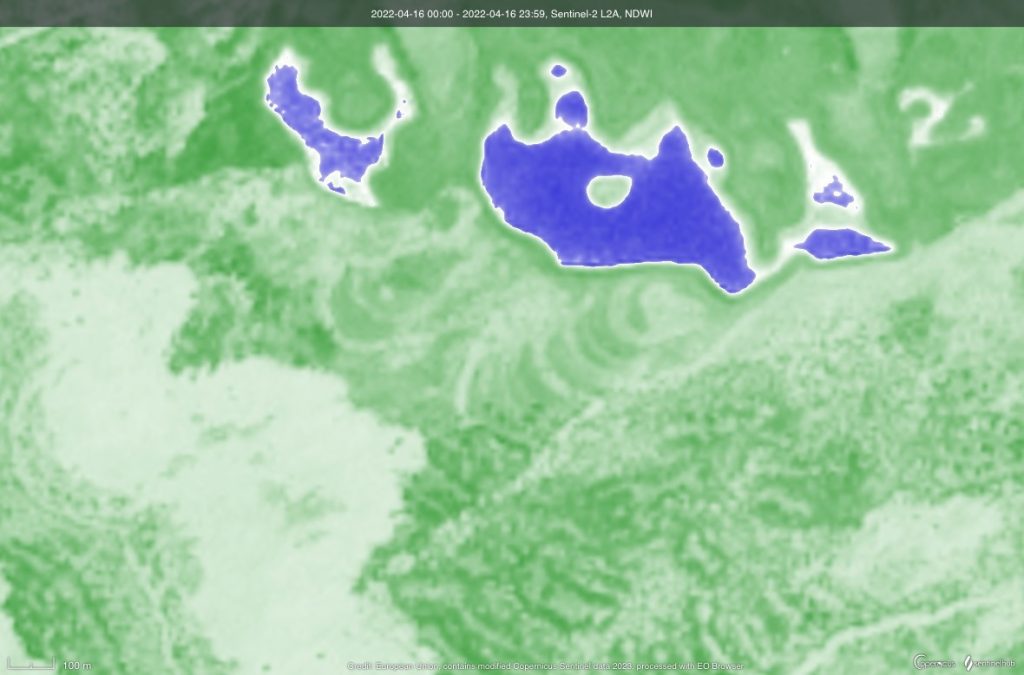Climate Detectives Projects 2022-2023
Project title: SOS DOÑANA
Team: SERITIUM SOS DOÑANA
IES SERITIUM Jerez de la Frontera Spain 19 Student’s age: 16-17 years old
How is climate change affecting the lagoons of Doñana National Park, and are the permanent lagoons being affected by illegal water abstractions?
¿Cómo está afectando el cambio climático a las lagunas del Parque Nacional de Doñana? ¿Se están viendo afectadas las lagunas permanentes por las extracciones de agua ilegales?
The lack of rainfall in recent years is causing permanent lagoons in the Doñana National Park, such as the Santa Olalla lagoon, to dry up.
These lagoons are systems of great biodiversity, as they are refuge areas for migratory birds that travel to Africa from Northern Europe.
La escasez de precipitaciones de los últimos años está haciendo que lagunas permanentes del Parque Nacional de Doñana, como la laguna de Santa Olalla, se sequen.
Estas lagunas son sistemas de una gran biodiversidad, ya que suponen zonas de refugio para las aves migratorias que viajan hacia África desde el norte de Europa.

In the time period studied (2016-2023), the average temperature is above the average of the last thirty years (reference period 1981-2010).
The year with the lowest number of months (4) with above-average temperatures was 2018.
The warmest year was 2020, with a total of 10 months considered warm, very warm or extremely warm.
In terms of rainfall, the year with the highest rainfall was 2018 (621.1 mm) while the driest year was 2019 (228.6 mm).
The Laguna de Santa Olalla has dried up completely in the summer period of all the years under study (2017-2022).
The drying of the Laguna de Santa Olalla can be directly related to climate change, since the years under study are drier and warmer than normal (according to AEMET data, reference period 1981-2010).
Illegal water abstractions in the Doñana area must also contribute to the drying up of the lagoons, but we have not been able to find a list of the number of wells estimated to exist, nor the volume of water they can extract, so we cannot quantify the extent to which they are responsible for this problem.
En el periodo de tiempo estudiado (2016-2023) se observa como la temperatura media está por encima de la media de los últimos treinta años (periodo de referencia 1981-2010).
El año que registró un menor número de meses (4) con temperaturas por encima de la media fue 2018.
El año más cálido fue 2020, con un total 10 meses considerados como cálidos, muy cálidos o extremadamente cálidos.
En cuanto a la pluviometría, el año con más precipitaciones fue 2018 (621,1mm) mientras que el año más seco fue 2019 (228,6 mm).
La Laguna de Santa Olalla se ha secado en su totalidad en el periodo estival de todos los años en estudio (2017-2022).
El que la Laguna de Santa Olalla se seque se puede relacionar directamente con el cambio climático, puesto que los años en estudio son más secos y cálidos de lo normal (según datos de la AEMET, periodo de referencia 1981-2010).
Las extracciones de agua ilegales en el entorno de Doñana también deben contribuir a que las lagunas se sequen, pero no hemos podido encontrar una relación del número de pozos que se estima que existen, ni del volumen de agua que pueden extraer, por lo que no podemos cuantificar en qué medida son responsables de este problema.
Awareness as individuals that water is a limited resource and that, due to climate change, shortages may occur in some areas.
Promote actions to reduce water consumption.
Dissemination of the conclusions obtained in our work to the school’s students.
Publication of our work on the school’s website.
Concienciación como individuos de que el agua es un recurso limitado y que, debido al cambio climático, podrán producirse problemas de escasez en algunas zonas.
Promover acciones para reducir el consumo de agua.
Divulgación de las conclusiones obtenidas en nuestro trabajo al alumnado del centro.
Publicación de nuestro trabajo en la página web del centro.
This project was automatically translated into English.
Projects are created by the teams and they take the full responsibility of the shared data.
← All projects



